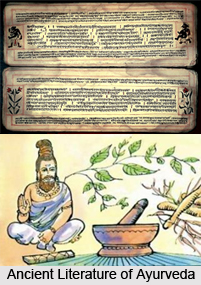 A cramp is an involuntary temporary strong muscle contraction, typically caused by fatigue or strain, which may Cramps occur for various reasons including hyper flexion, hypoxia, dehydration, or low blood salt and exposure to large changes in temperature. There are various types of cramps like leg cramp, hand cramp, abdominal cramp, menstrual cramp and writer`s cramp to name a few.
A cramp is an involuntary temporary strong muscle contraction, typically caused by fatigue or strain, which may Cramps occur for various reasons including hyper flexion, hypoxia, dehydration, or low blood salt and exposure to large changes in temperature. There are various types of cramps like leg cramp, hand cramp, abdominal cramp, menstrual cramp and writer`s cramp to name a few.
1. Leg Cramp
Leg cramp, also known as night leg cramp, is common and it comes from a leg muscle. It usually occurs in a calf muscle, below and behind a knee. The small muscles of the feet are sometimes affected.
Causes and Symptoms
Leg cramp occurs for no apparent reason; however, it may be brought on by many conditions or activities. Leg cramp may occur while exercising, pregnancy etc. Sleeping disorder can also invite leg cramps.
The cramp lasts for a few minutes and sometimes a few seconds. Rarely though, they can last up to 10 minutes. Sometimes the pain is so severe that the patient is woken up and has a tender muscle for up to 24 hours afterwards. During cramping, the affected muscles become tight and the feet and toes turn stiff.
Remedies
Leg cramps can be avoided or prevented by taking care of adequate nutrition and hydration. Safety measures also have to be taken while exercising like wearing proper footwear and comfortable cloths. If someone is involved in active works then drinking plenty of water is beneficial as this helps to avoid dehydration. But overdoing it can lead to diluting the concentration of sodium in blood. This causes a variety of problems, including muscle cramps. Stretching the calf and foot muscles before going to bed can help prevent cramps in the first place.
2. Hand Cramp
Cramp in hand occurs for different causes like trauma or injury to a nerve in the hand. Hand cramps are usually brief, but they can be severe and painful, and sometimes accompany a tingling or burning sensation.
 Causes and Symptoms
Causes and Symptoms
Hand cramp can arise for different reasons. It develops as a result of conditions affecting muscles. It also arises due to trauma or injury to a nerve in the hand. Even hyperventilation can also lead to hand cramp as carbon dioxide levels in the blood become too low. Low levels of calcium, magnesium, and fluids in the body invite hand cramp as well.
Generally, when hand cramps develop one experiences difficulty in moving the hand, wrist or fingers. During this episode, an individual also faces problems like tingling stiffness or swelling of the hand or joints.
Remedies
Hand cramp can be avoided by stretching and massaging the hand in the proper direction as it improves the blood circulation and relaxes the contracted muscles. If one feels the development of cramp then it can be avoided in advance by shaking the hand. Including proper diet in the system like calcium, potassium and magnesium is also helpful.
3. Abdominal/ Stomach Cramp
Abdominal cramp occurs anywhere in the abdominal area. Organs of the abdomen include the stomach, small intestine, colon, liver, gall bladder, and pancreas.
Causes and Symptoms
There are several reasons for the development of abdominal cramp like gastroenteritis, irritable bowel syndrome, constipation, small bowel obstruction, miscarriage, hypothyroidism, dehydration, thyroid disorders etc. At the time of abdominal cramp, an individual can feel pain in the abdomen area.
Remedies
Eating simple foods, drinking plenty of water and avoiding junk dishes are helpful. One has to make sure to avoid overloading the digestive system with food that will add to the digestive burden.
4. Menstrual Cramp
Menstrual cramp is also known as period pains. It refers to the painful sensations felt in the lower abdomen which can occur both before and during menstrual period. Menstrual cramps tend to begin after an egg is released from the ovaries and travels down the fallopian tube.
 Causes and Symptoms
Causes and Symptoms
Menstrual cramps are faced by many women and it can range from mild to quite severe pain. Apart from the biological reasons, there are various factors that cause this cramp like smoking, fast lifestyle, sleeping disorder etc. Psychological and emotional stress can also lead to uncomfortable feelings during this time period.
There are various symptoms of menstrual cramp including pain in the lower abdomen, pain in the lower back and thighs, nausea, vomiting, dizziness and headaches to name a few.
Remedies
Quitting smoking, reducing stress, maintaining a balanced diet and limiting intake of fat, alcohol, caffeine,salt, and sweets can help one to get rid of pain. Remaining active and involving in at least some basic exercises or yoga can be of great help in the long run.
5. Writer`s Cramp
Writer`s cramp, also known as mogigraphia and scrivener`s palsy has a tendency to become permanent. It causes spasm which affects certain muscles of the hand and/ or fingers. This disorder owes its name to the relative frequency with which it develops in persons who are in the habit of writing too much, although it is by no means confined to them.
Causes and Symptoms
There are generally, two types of symptoms seen in case of writer`s cramp; one is simple and the other is dystonic. People with simple writer`s cramp have difficulty with only one specific task that is writing. The muscles of the fingers and the forearms are seized with cramps. Sometimes the fingers, instead of being cramped, move in a disordered fashion and the pen cannot be grasped. At other times, the fingers are struck with paralysis and they are unable to move enough to write.
While in dystonic writer`s cramp, an individual faces difficulty in various activities such as such as shaving, using eating utensils, applying make-up etc.
Remedies
Writer`s cramp can be avoided through various methods or techniques. Relaxing or shaking the wrist before writing is helpful. Bringing changes in the method of writing is also helpful.
Apart from the above mentioned remedies, there are various injections and medicines available in the market which can be taken only after consulting with a doctor.




















